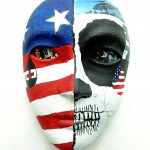
Bill O'Brien
In Tribute to Their Service
Posted by Nov 18, 2013 0 comments

Bill O'Brien
Every November, Veterans Day comes and goes as a reminder for us to thank our American military men and women for their sacrifice and service. As our most recent conflict has transitioned into the longest war in American history, the burden of their service has become harder and harder to ignore. More and more, we are compelled to find meaningful ways to show respect.
Over the past few years, a number of initiatives have emerged to help rally the arts in support of our troops and their families. These efforts have received a significant boost from The National Initiative for Arts and Health in the Military. A broad coalition of military, government and non-profit leaders initiated by the Walter Reed National Medical Military Center and Americans for the Arts, the Initiative has staged two national summits, a national Roundtable, and has published a white paper framing an action plan to advance research, practice, and policy around the arts and the military.
As previously mentioned on this blog, the NEA has also been working with Walter Reed and the National Intrepid Center of Excellence (NICoE) to improve our understanding of the impact the arts can bring in efforts to heal our troops. This partnership, which initially focused support on therapeutic writing, has now expanded into a broader Creative Arts Therapy program that also includes support for research and activities related to music and visual arts-based therapies.
This month, the NEA announced a new partnership with the Fort Belvoir Community Hospital that will bring components of the arts program designed and tested at Walter Reed’s NICoE to the recently opened Intrepid Spirit 1 NICoE satellite in Virginia. The NICoE satellites will extend the “hope, healing and discovery” efforts currently provided at Walter Reed’s NICoE to home bases across the country. And this new partnership will provide the NEA and the Department of Defense an opportunity to conduct further investigations on how these cost effective, non-invasive arts-based interventions can be replicated in other settings to help heal our troops.
These investigations are providing us with opportunities to improve our understanding of why these arts interventions appear to be having an important impact on the healing efforts of participating patients. We still have a lot to learn, but the themes embedded in artwork generated by patients in these venues can begin to offer us some insight into to the benefits that the meaning-making efforts of these interventions can bring.
For example, this mask (pictured right) was made by a patient attending Melissa Walker's arts therapy session at Walter Reed's NICoE. The themes on the mask are divided in two. The left side is a patriotic decoration with stars and stripes and a photo of the president waving a flag. On the right you see a skeleton and battle scenes that bring to mind more gruesome images of war. Across the mask is written, "I have destroyed my life and myself, so that others may live." There are tears on both sides. One side illustrates our country shedding tears for our military, and the other pictures our military crying for our country.
Organizing these conflicting themes on a mask like this provides both the patient and the viewer (or healthcare provider) with an opportunity to experience a kind of Aristotelian catharsis, where intellectual clarity emerges out of emotional chaos. In this case, it provides us with an ability to confront, consider and collide two very complex and conflicting sides of war. It is cruel and terrible, but it is more than that too. There is another, more honorable side of war that tugs at us on holidays like Veterans Day, Memorial Day and on the 4th of July that is also reflected in the mask. We tend to grasp at these more positive themes by using words like "valor", "honor" and "duty", though through the distracting horrors of war, it can be a challenge to remain cognizant of what we mean when we say them.
Viewing this mask led me to think about a book I read recently by Pulitzer Prize-winning biologist E.O. Wilson called The Social Conquest of Earth. In it, Wilson argues that human conflict and war is actually driven by an altruistic trait (when the commitment is strong) to sacrifice oneself for the good of the group.
If this is true, civilizations that evolved and endured across the ages were sustained and moved forward because they included individuals among their ranks who cared so deeply about their customs, beliefs and communities that they were willing to risk everything, even their own lives, to protect them. The future of their whole way of life, and everything that it would lead to, depended upon them.
War is atrocious. That's one half of the more obvious story that can be seen on one half of this patient's mask. But when you consider the impact that warriors have had on shaping civilization since the dawn of humanity, another other side emerges. When it does, words we use to describe military service like "valor", "honor" and "duty", resonate without conflict. We would not be here now, as we are today, if it were not for them. Thank them for their service.
Learn more about the National Initiative for Arts and Health in the Military and the ways that art helps heal in our Google Hangout on Tuesday, November 19 at 4:00 pm EST. Join here.


